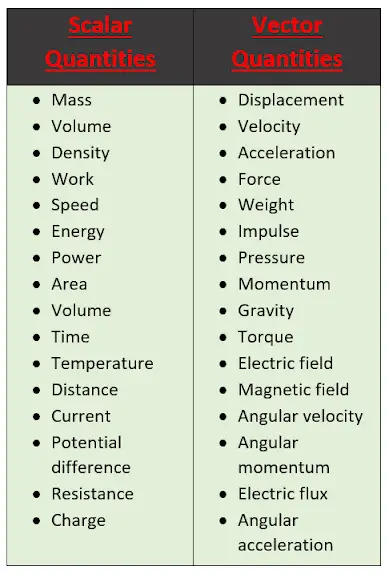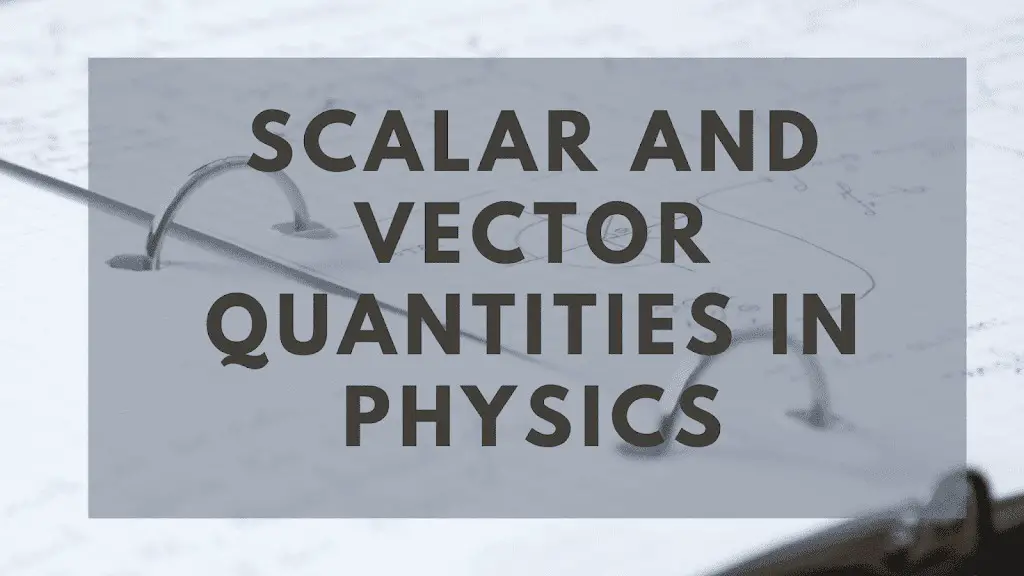This article about vectors and scalars in physics gives a basic introduction to both these quantities. Here, we have defined both these quantities and created a list containing examples of both vector and scalar quantities. In this article, you will also get to know the differences and some similarities between both scalar and vector quantities.
Vectors are one of the most important concepts of mathematics. Vectors find a wide variety of applications in fields like
- Geometry
- Mechanics
- Applied mathematics
- Engineering
- Physics
- Computer Science etc.
Here we will discuss vectors in the context of Physics. While studying
Introduction to Vectors and Scalars in Physics
physics we come across various physical quantities. These quantities generally are of two types:
- Scalar Quantities: They only have magnitude.
- Vector Quantities: They have both magnitude and direction.
Scalar Quantity Definition
Those quantities which only have magnitude and does not relate to any fixed direction in space are called Scalar Quantities.
To represent a scalar quantity, we assign a real number to it which gives the magnitude of the quantity under consideration. We also attach the unit to this quantity for example number 20 can mean anything but if we associate this number with length, we must associate a unit with it. This unit shows the order of magnitude of the quantity under consideration as a length of 20 Km is greater than the length of 20 m and a length of 20 m is greater than 20 cm.
So, you must specify a unit of Scalar quantity under consideration otherwise, the quantity does not have a clear meaning.
Scalar quantity examples
We encounter lots of scalar quantities while studying physics. Given below is a scalar quantity list of some commonly used scalars
- Mass
- Volume
- Density
- Work
- Speed
- Energy
- Power
- Area
- Volume
- Time
- Temperature
- Distance
- Current
- Potential difference
- Resistance
- Charge etc.
Vector Quantity Definition
Physical quantities which have both magnitude and direction are known as vector quantities.
It is important to note here that in addition to magnitude and direction, two vector quantities of the same kind must compound according to the parallelogram law of vector addition. If they fail to compound according to the parallelogram law of vector addition, then they will not be treated as vectors.
For example, rotations of a rigid body through finite angles have both magnitude and directions but they do not satisfy the parallelogram law of addition of vectors.
Vector quantity examples
The list given below shows some of the examples of vector quantities in physics
- Displacement
- Velocity
- Acceleration
- Force
- Weight
- Impulse
- Pressure
- Momentum
- Gravity
- Torque
- Electric field
- Magnetic field
- Angular velocity
- Angular momentum
- Electric flux
- Angular acceleration etc.
List of scalar and vector quantities in tabular form

Difference between scalar and vector quantity

Similarities between Scalars and vectors
Despite being different there are several similarities between both vectors and scalars
- They both express certain physical quantities.
- Both these quantities can be measured. That is these quantities can be quantified.
- Both of these physical quantities have dimensions and units







Nice article. It helped me a lot.